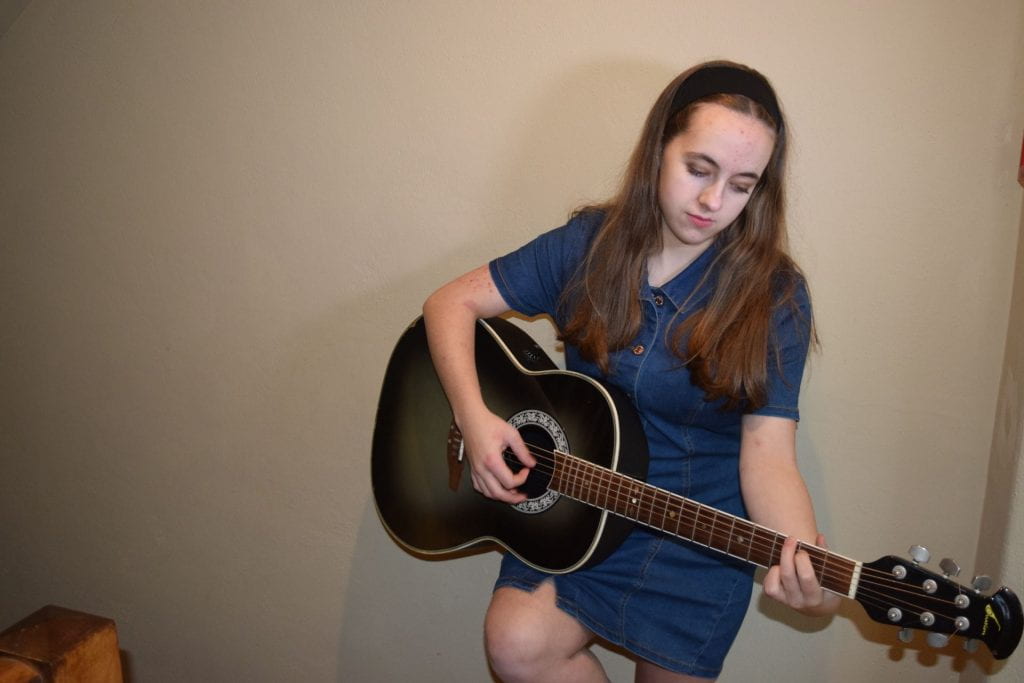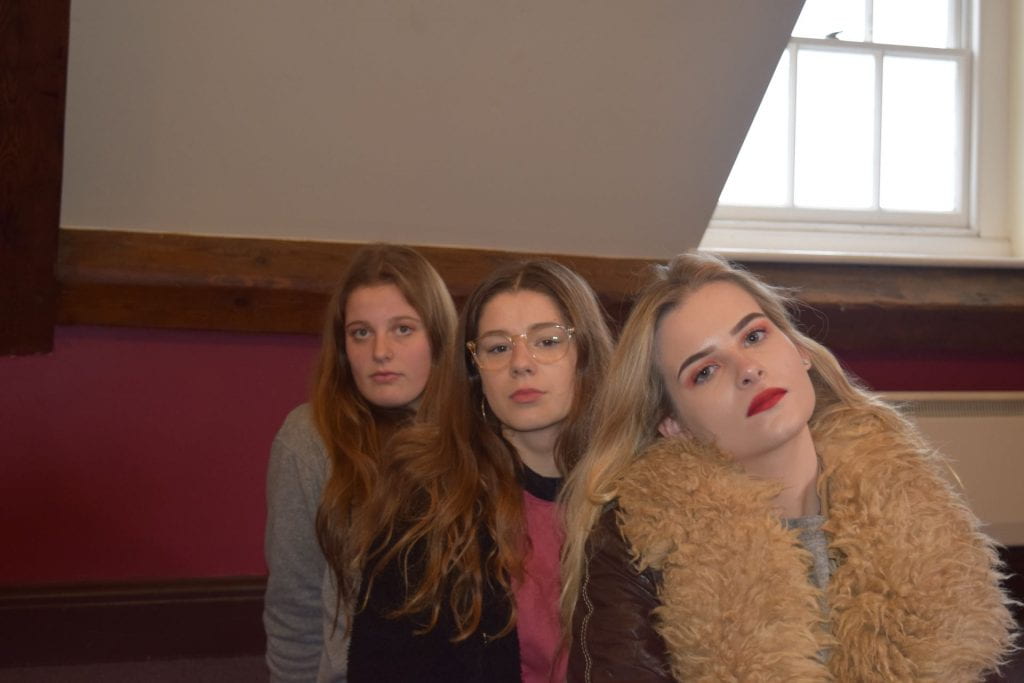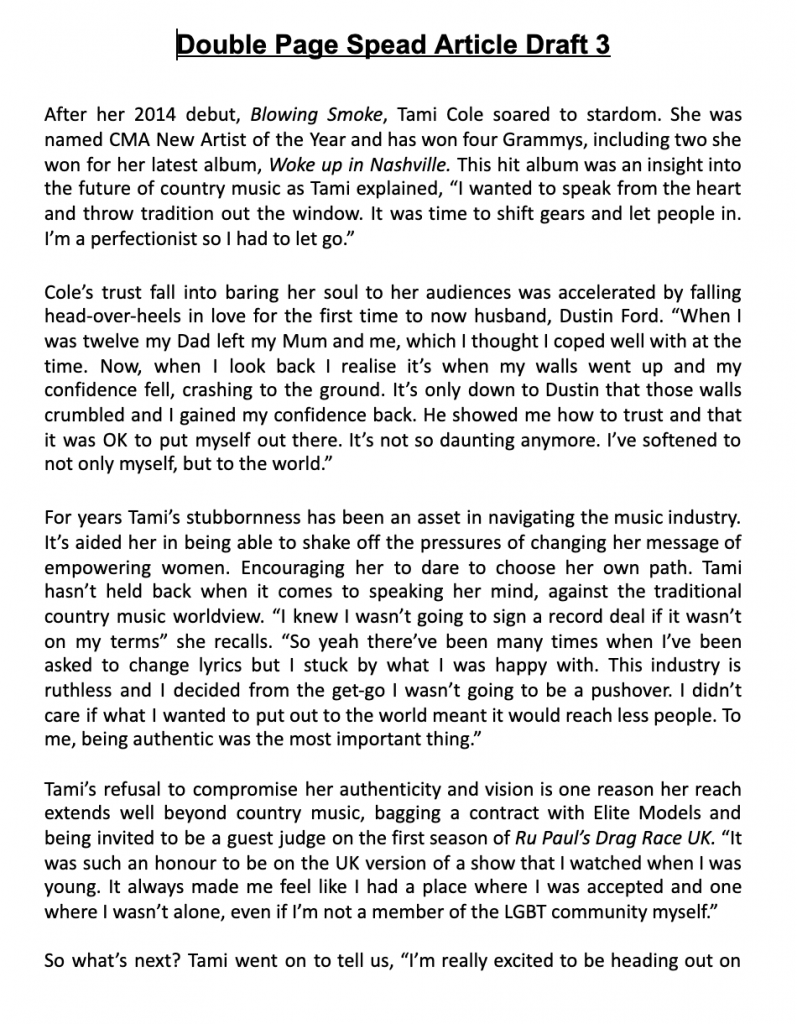
Please click to view the article I analysed.
‘Billboard (June 20 2015), Adam Lambert: Don’t look back’
In order to gain an understanding of articles in music magazines I analysed an interview of Adam Lambert in Billboard magazine. In the article, we are not aware of the presence of the journalist as we only hear from Adam himself. This creates a conversation-like atmosphere to the article and makes the reader feel like they are closer to the star and more involved and included with them. The interview is written in third person, with quotes from Lambert himself. This helps to remind the audience of his success and star power.
There is a clear structure to the article. The introduction sets the scene for the article as it introduces Adam Lambert as untouchable when it says “ready to kick some ass” and he’s “sauntering through a penthouse” in “Hollywood.” This makes the target audience of teens interested in what he has to say as he is presented as rebellious and powerful, which is something they would look up to. Then we move into the interview which is very honest and real. This makes the audience feel like they know Lambert and can relate to him as he talks about every day things. Finally, in the conclusion Lambert reflects on life and ends with a question which gives us a clear ending to the article. Also the writing helps to communicate the article and its genre as it’s very bold and simple with hints of colour, which fits with the pop genre of the magazine.
The audience is made to feel sympathy for Adam Lambert as he says early on in the article “It’s hard for me to be happy with things.” Later in the article he becomes more positive focusing on the future, which helps the readers to view him as powerful and untouchable after seeing his vulnerabilities.
Overall, I think that Adam Lambert is presented as rebellious, untouchable and successful, whilst at the same time proving to be relatable, real and honest. This is a good use of Richard Dyer’s Paradox of the Star theory and how we can view these stars as both ordinary and extraordinary.




















